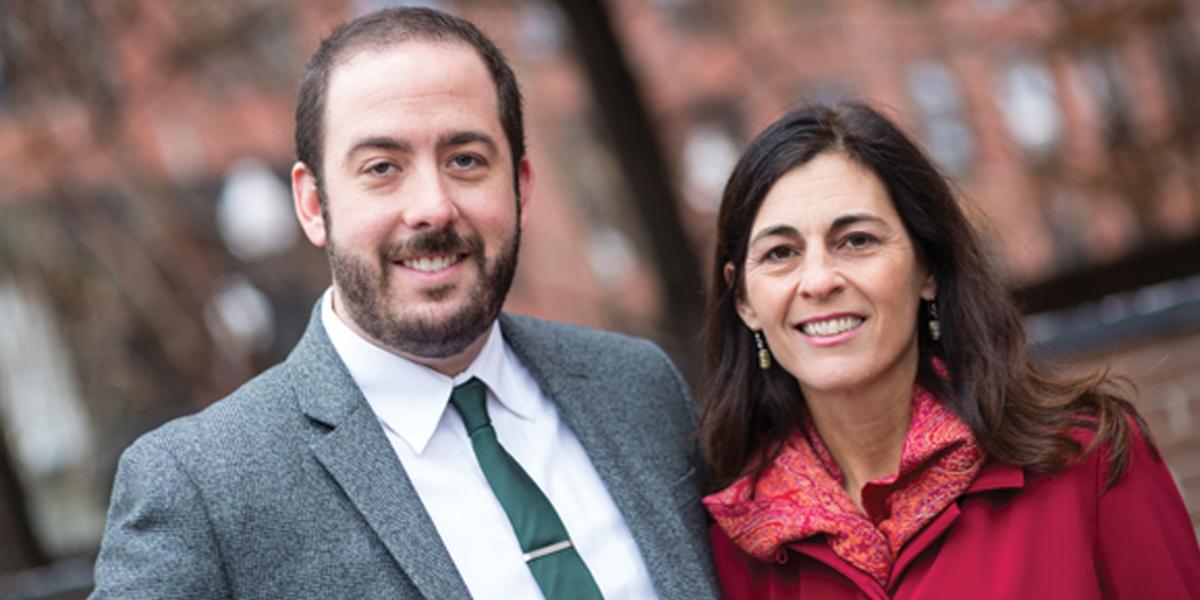Safer Harbors
Emphasizing prevention over punishment
It's wrong for states to try to arrest their way out of the child prostitution problem—not to mention misguided to call it “child prostitution,” according to Ryan Shields, PhD, an assistant scientist in the Bloomberg School’s Moore Center for the Prevention of Child Sexual Abuse.
“We love to punish,” says Shields, a Baltimore native who worked in criminology—suicide and homicide research was his niche—before committing to the study of sex offender policy. “We punish more people than any other country.”
It’s time, he says, to reorient ourselves as a society that values prevention and commits criminal justice resources to it.
This point of view is lonely, Shields acknowledges, and drowned out by our nation’s blaring bipartisan emphasis on a punitive response for sex-crime control. Bolstered by Moore Center founding director Elizabeth Letourneau whose perspective also prioritizes prevention, and a new federal grant to investigate Safe Harbor laws, Shields is undeterred. “Safe Harbor” is an umbrella term for policies that advocate the treatment of juveniles as victims instead of offenders/criminals. In the U.S., it has only been since 2000 that child prostitutes are viewed as victims in the eyes of the law.
I would like our country to perceive child sex trafficking as another form of child sexual abuse, one form of many. Instead, it’s been carved out as its own entity.
Shields’ study is focused on answering: Is Safe Harbor effective, and what does it take to implement it?
Why is this analysis of Safe Harbor an important part of the Moore Center’s research?
EL: I would like our country to perceive child sex trafficking—also known as commercial sexual exploitation of children—as another form of child sexual abuse, one form of many. Instead, it’s been carved out as its own entity. But very likely, the same risk factors are there for kids to be trafficked as for kids to be sexually abused in general. Preventing trafficking is, I think, not going to look much different, if at all, from preventing other forms of child sexual abuse.
What is the Safe Harbor situation nationwide?
RS: States vary with how they address juveniles who’ve been commercially sexually exploited. Currently, there is some type of Safe Harbor legislation in 18 states. In some states, the juvenile has to be 16. In Texas, for instance, it applies only to kids younger than 14; 13 or under, you won’t get arrested, but if you are 14, you will. States without Safe Harbor laws (like Maryland, for instance) may have moved toward diversion programs. They might arrest the juvenile, then refer them for substance abuse and home placement.
Is there a model state that you would recommend others follow?
RS: There hasn’t been any systematic evaluation of decriminalization or diversion, and within those approaches, the variations haven’t been evaluated. That’s the basis of our study.
My hope is that youth who are protected by Safe Harbor fare better. But the science has yet to evaluate these policies comprehensively.
Could you please elaborate a bit on your science?
RS: First, my study takes a broad view, looking at the national level, and asks, Have arrests of juveniles for prostitution declined since 2000 [the year that federal legislation passed]? The number should have gone down, but did it?
Next, using data from state criminal justice systems, I’ll compare cases of kids who have been protected by Safe Harbor legislation versus kids prosecuted by criminal justice means. My big question is, Are kids protected by Safe Harbor less likely to have a future contact with the juvenile justice or criminal justice systems? Lastly, we will be conducting interviews and leading focus groups with key stakeholders in the implementation of these policies, including law enforcement officers, treatment providers and social workers.
Is Safe Harbor’s bottom line about preventing recidivism?
RS: Yes, but let’s reframe how we think and talk about it. Having re-contact with the justice system is different from “reoffending,” and from what is commonly referred to as recidivism.
Along those same lines, we don’t like the term “juvenile prostitution” because it sounds like the juveniles consented to participating in prostitution. We prefer the term “commercial sexual exploitation of children.” Part of the challenge is, kids in that world may not see themselves as victims. We think they are. It really is a shift in thinking about not just what we do with so-called juvenile prostitution but how we view it overall.
How does the Safe Harbor research align with the Moore Center’s mission to turn research into practice?
EL: I suspect we’ll find mixed reviews [of Safe Harbor], and that’ll point to how we can maybe alter policy to be more effective. The larger question as we identify and end ineffective policies is, Can we do more to prevent these sorts of things from happening in the first place?
